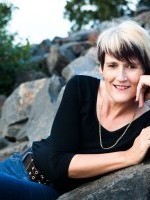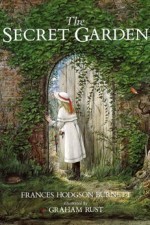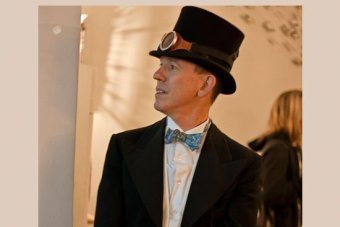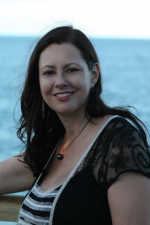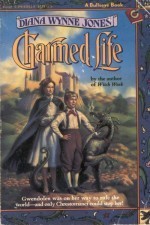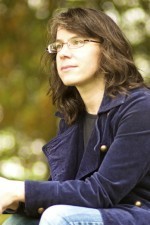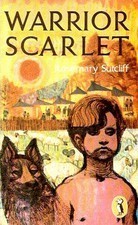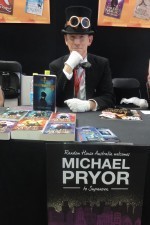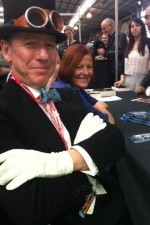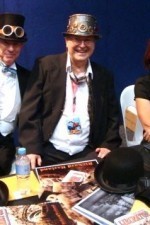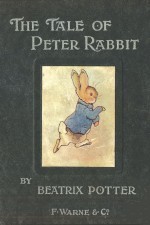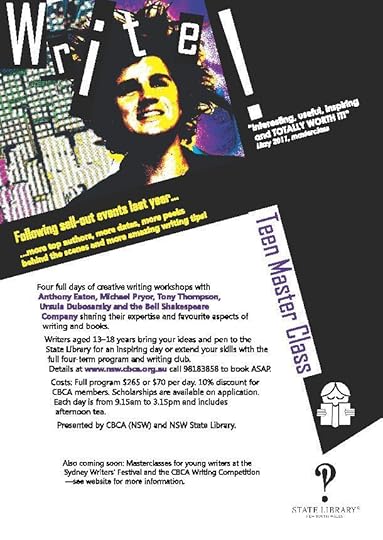Michael Pryor's Blog, page 21
May 20, 2012
SWF Writer Overnighter
On Friday 18th May I was lucky enough to be part of the Sydney Writers’ Festival ‘Writer Overnighter’ at the Powerhouse Museum, and what fun it was. I’d never been to the Powerhouse before – a sad gap in my vast store of museum love – so I was nearly as excited as the fifty or so young people who came along for a night of 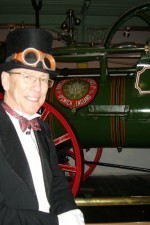 food, activities, talks, demonstrations and exploration, with the bonus of being able to choose their own special place to sleep in a museum. The whole museum was alive with magnificent steam power, with so much whirring, rocking, rotating, hissing and clanking that it was a Steampunk writer’s dream come true.
food, activities, talks, demonstrations and exploration, with the bonus of being able to choose their own special place to sleep in a museum. The whole museum was alive with magnificent steam power, with so much whirring, rocking, rotating, hissing and clanking that it was a Steampunk writer’s dream come true.
So much fun was packed into our time there, from steam-driven balloons to excited ping pong balls to steam-driven ice cream makers. When my turn came, I was able to explain why history is so useful to a Fantasy writer before going on to demonstrate how Steampunk is such a sublime blending of history and imagination. After that, of course, we all got down to write and I was staggered at the creative outpourings from everyone there. In a short time, we had imagined enough explorers, scientists, engineers and spies to populate a thousand Steampunk stories, and all of them had elaborate Steampunk vehicles, ranging from submarines to pogo sticks. I don’t care how well reinforced that old turbine room was, I think we were only a handful of ideas away from blowing the roof off.
When I left, the whole crowd was settling in to watch a movie before bedtime. The movie? Steamboy, of course!
Many thanks to Michael and Helen and all of the Powerhouse staff who put on a superb show. Their friendliness and professionalism was first class.
May 14, 2012
Supanova Sydney
May 10, 2012
Writers Write: My Favourite Book 24
The Secret Garden will forever be the most important book from my childhood. My sister was a little older, and on school holidays she used to take time to read to me.
I can still remember sitting in my dad’s old green armchair in our family room which was lined with books, listening to her. When she read The Secret Garden she always did her best to make the voices sound real, especially Dickon’s broad accent. It was like being right there on the English moors.
I experienced so many emotions listening to that story (which I later went on to read myself, many times) – fear, isolation, sadness, determination, wonder. Mary was a the first strong and defiant female character I’d met in fiction and her determination to survive the loss of her parents and help Colin to better health was inspiring. The secret garden itself was the sort of place every child wants to discover and have as their special secret. A few years ago, when I went to the Varuna Writers Centre, I found their tiny walled garden – it was the closest thing I’d ever seen to a secret garden and I was immediately taken back to age nine.
Burnett’s theme of the inherent healing power of nature really appealed to me and I think has long influenced the way I think about the world. Interestingly, I resisted seeing the film adaptation. I really didn’t want my own perfect vision of the story reinvented or tainted in any way. The memory is so precious. When I became a god mother for the first time, I gave my goddaughter that as a christening present. It seemed to be the most important thing from my life that I could pass on to her; a story or survival and courage that also tells of the importance of friends and family and nature in our lives.
Marianne’s latest YA book is ‘Angel Arias’ (Random House Australia), Book 2 in the ‘Burning Bright’ series. Book 3 – ‘Shine Light’ – will be released in November 2012. For more, see the Burning Bright website, or Marianne’s website.
May 9, 2012
Radio National Steampunk
Recently I was asked into Radio National to chat about my books in general and Steampunk in particular. Download available here.
May 8, 2012
Writer Overnighter
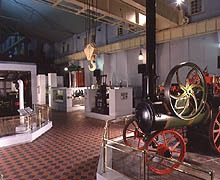 I’ve been asked to be part of a fun ‘Night at the Museum’ experience at Sydney’s Powerhouse Museum next week. It’s a chance for young readers to sleep overnight in a real, proper museum place, as well as enjoying a range of sensational activities. I’ll be running writing workshops, as well as just running around wide-eyed at all the exciting exhibits. I’m keenly looking forward to the steam displays, which are a great love of mine.
I’ve been asked to be part of a fun ‘Night at the Museum’ experience at Sydney’s Powerhouse Museum next week. It’s a chance for young readers to sleep overnight in a real, proper museum place, as well as enjoying a range of sensational activities. I’ll be running writing workshops, as well as just running around wide-eyed at all the exciting exhibits. I’m keenly looking forward to the steam displays, which are a great love of mine.
Plenty of places left, but bookings are essential. More info here.
May 2, 2012
Writers Write: My Favourite Book 23
When I heard year that Diana Wynne Jones had died, I grieved as deeply as if I had known her. Part of my sorrow came from the thought that there would be no more Diana Wynne Jones books … no more funny, wise, magical stories that never fail to enchant and surprise.
I was 11 years old when I read ‘Charmed Life’, which has remained my favourite book of hers ever since. It was published in 1977, and was commended for a Carnegie Award and won both the Guardian Award and the Preis der Leseratten in Germany.
The hero of ‘Charmed Life’ is a boy called Cat Chant. Her and his sister Gwendolen are sent to stay at Chrestomanci Castle after their parents are drowned in a steamboat accident. The castle is the home of the Chrestomanci, a powerful enchanter with nine lives whose job is to manage and control the use of magic in all the many worlds.
Cat thinks he is a very ordinary sort of boy, but his sister Gwendolen is a talented witch. However, as the story progresses we learn that Cat is indeed a very special boy, with strong magical powers of his own which his sister has been using for her own gain.
Diana Wynne Jones has gone on to write a number of other books about Cat, the Chrestomanci and the castle, all of them with her own particular brand of warmth, charm, wit and unpredictability.
Diana Wynne Jones wrote: ‘Why do I write for children? There is one good reason. I would hope to encourage some part of one generation at least to use their minds as minds are supposed to be used. A book for children, like the myths and folktales that tend to slide into it, is really a blueprint for dealing with life. For that reason, it might have a happy ending, because nobody ever solved a problem while believing it was hopeless. It might put the aims and the solution unrealistically high – in the same way that folktales tend to be about kings and queens – but this is because it is better to aim for the moon and get halfway there than just to aim for the roof and get halfway upstairs. The blueprint should, I think, be an experience in all the meanings of that word, and the better to make it so, I would want it to draw on the deeper resonances we all ought to have in the other side of our minds.’
Kate Forsyth’s latest book is ‘Bitter Greens’ (Random House Australia). For more about Kate, visit her website.
April 27, 2012
Writers Write: My Favourite Book 22
I think I must have been ten when I began to read Rosemary Sutcliff’s books. It was a strange time for me – a confusing and somewhat lonely one. My parents had split up, and we had gone back to England, leaving my friends, my school and the various treasures a ten-year-old deems precious behind in Australia.
We went to live with my grandparents. Retired academics, they were full of wondrous knowledge which they delighted in sharing – and one of the richest veins of their learning was history. Certainly it was they who introduced me to Jane Austen, even taking me to The Pump Room in Bath to ‘take the waters’, as the upper classes did in the Regency Period (I remember finding the style absolutely enchanting, but the waters somewhat nauseating). And I believe it was my grandparents who gave me a copy of The Eagle of the Ninth, Rosemary Sutcliff’s most famous novel, a few months into our stay with them.
It was awe-inspiring. I’d visited many a Roman ruin by that stage and been fascinated by them, but Sutcliff made those long-gone inhabitants real. Not in the faintly anachronistic way I’d experienced with other children’s books about the past – the ones where the characters seemed like people I could meet in the here and now – but with a strong, evocative prose that brought me into their world. I devoured every book of Sutcliff’s I could find, loving each of them and living each of the historical periods she wrote about. One book in particular, however, gripped me even more than the others.
Warrior Scarlet is set in Bronze Age Britain, and from the moment I opened it I saw that world. It wasn’t until I studied ancient history at university, I think, that I realised Sutcliff couldn’t have known very much about what life on the Downs some 3,000 years ago was really like. She’d managed to take what little remains of the Bronze Age peoples’ cultures – knives and potsherds, brooches and burial mounds – and use it to regenerate the men, women and children who lived then. Even the dialogue was utterly believable, employing unusual grammatical structures and idioms to give the impression of a language with a very different basis than our own. Sutcliff’s writing, devoid of sentimentality yet deeply emotive, delivered some of the most vivid imagery I had ever encountered … and more than a quarter of a century later, that still holds true.
Warrior Scarlet is filled with characters who don’t fit in: Drem, the boy who grows up expecting to gain his warrior status despite not having the use of his right arm; the indigenous people who, having been conquered by Drem’s kind, now serve as their shepherds; Blai, who was left with Drem’s family after her mother died in childbirth and waits in vain for her father to come and reclaim her. It’s a story of loneliness and aching confusion, and of discovering that the things you take for granted in your world can be ripped away without warning … all of which resonated with me at that time in my life. But it’s also a story about reassessing and finding new paths, and about discovering the other people around you who are out of place too.
Reading Warrior Scarlet now, as an adult and a writer, is still a breathtaking experience – although it does spark the occasional twinge of envy in me. Reaching thousands of years into the past and bringing a world back, apparently undisturbed, to tell your story with? Now that’s a skill I wish I had.
Nansi’s latest book is ‘Dangerously Placed’ (Random House Australia 2011). For more, see Nansi’s website .
April 24, 2012
Supanova!
I’ve had a hectic – but rewarding – time lately. It’s been Supanova season and I was chuffed to be asked to be part of the program in Melbourne and the Gold Coast. I visited Supanova last year and I loved the mad whirl of creativity and playfulness that was on display. This year was the same, but more so, particularly as I was able to get a glimpse of the vast enterprise that lies behind the scenes.
It’s the crowd of excited visitors that make a show like Supanova what it is. They make the days a riotous panoply of wonder with their ingenious and dazzling costuming skills. Sitting on the author signing stand with people like Richard Harland, Brandon Sanderson, Kylie Chan, Keri Arthur, Trent Jamieson, Alison Croggon, Bevan McGuiness, Marc McBride and Ian Irvine, I was able to take in the passing parade of glory.
I love the Supanova crowd. Genre people are among the most accepting, most tolerant and most fun of them all. In the hurly-burly there was a remarkable feeling of goodwill and jollity, even as the long days drew to a close. If more of that spirit was out there in the world, it would be a better place.
I was lucky enough to meet dozens of happy readers. It’s humbling to hear about how much they enjoyed my books. Some brought battered copies of my early works for me to sign, and I saw the appreciation in every dog-eared page and every crease on the binding. And a special thank you to Korbinnian. Her gorgeous sketches showed how well she knew Aubrey, George and Caroline and I think she deserves to be in charge of Art Direction and Costuming if ever a movie is made of the Laws of Magic series. Many thanks to Dot and Sarana from Random House for all their efforts, too, on the Random House stand. In Melbourne, we were joined by Ben Chandler, Deb Abela, Sue Bursztynski and Nansi Kunze, who added their special extraordinariness to the occasion.
Being part of the program meant that I was able to meet people like Will Wheaton, Edward James Olmos, Morena Baccarin, Rainbow Sun Francks, Jaimie Alexander, Janet Fielding, Richard Horvitz, and Tom Taylor. Friendly, funny, welcoming and charming, without exception.
I have to thank the serene and organised Ineke Prochazka who was in charge of the books and authors program. She was tirelessly supportive and encouraging, as were her crew (Bob and Emma in particular).
Supanova is a head-spinning experience, but one well worth participating in. Look out for it next time around, wherever you live.
April 18, 2012
Writers Write: My Favourite Book 21
When I looked back on my childhood for the purposes of this post, I realised that the single most influential book I read was The Adventures of Peter Rabbit, by Beatrix Potter.
My mother read it to me when I was four. For those who don’t know, Peter Rabbit is about a young rabbit – dressed in a blue coat but nothing else – who tries to steal carrots from the MacGregor farm. He is very cute. He has siblings: Flopsy, Mopsy and Cottontail, who are all much better behaved. Peter is the risk taker. Generations of children have loved Peter Rabbit.
I hated him. You have to remember I’m an Aussie girl, and in Australia rabbits are vermin. I was taught, very young, that the only good rabbit was the one simmering deliciously on the stove, so when it came to the Peter Rabbit stories, I was firmly on Farmer MacGregor’s side.
But worse than that, I was a very literal child. Peter Rabbit is a story where humans act like humans (that is, they try to kill thieving rabbits) but rabbits also act and dress like humans – Potter was having her anthropomorphic cake and eating it, too. I was four. I kept asking: why is he in a blue coat? why does his mum wear an apron? That’s stupid, I said.
And my mum, clearly fed up with all of this, handed me the book and said, ‘You can read, read it yourself.’ She never read me another book. Which is why I still hate Peter Rabbit… but she also stopped choosing my books for me at the library, no doubt reasoning that if I could read I could pick my own stories.
So from the age of four my main reading influence was my librarian, Mrs Woods, who loved folk tales and myths and fantasy and science fiction…. and that’s why I think Peter Rabbit was the most influential book I ever read as a child, because without it I would never have found the stories I needed, the stories which fed my soul, about which I never said, ‘But that’s stupid.’ Speculative fiction got hold of me young and never let go – all thanks to Peter Rabbit.
Pamela Freeman writes for both adults and children. Her most recent adult fantasy, ‘Ember and Ash’ (Orbit Books, 2011), is set in the universe of The Castings Trilogy. She is best known in children’s literature for her award-winning junior novels ‘Victor’s Quest’ and ‘Victor’s Challenge’. Her most recent children’s novel is ‘Lollylegs’ (Walker Books, 2011). For more, see Pamela’s website.

